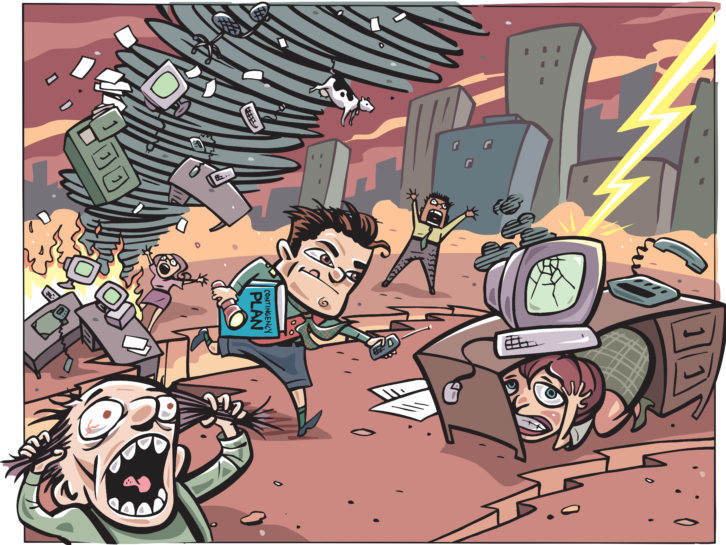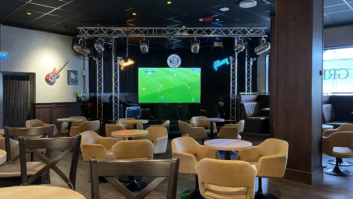
As the pandemic piledrove its way around the world, the word “pivot” buzzed through Zoom meetings as manufacturers, integrators, organizations, and associations alike scrambled to make their businesses functional in the so-called new normal.
Hamburger chain Fuddruckers addressed bread shortages by selling loaves directly to consumers (unfortunately, that didn’t work out for them as many locations have shuttered anyway). Liquor companies began to produce hand sanitizer from distilled alcohol (though we’d argue the alcohol was just as important). Integrators rose to the occasion, turning to virtual service and support programs when it was not safe to roll a truck or do site visits in person (and absolutely crushed it, I might add!).
Trade show cancellations spurred a range of emotions from reluctant relief to questionable optimism to extreme panic to slap-happy indifference as brands scrambled to promote products they had been prepping for release without a physical venue.
If we’ve learned anything in the last year, it’s that you never know what tomorrow might bring and that contingency plans are a critical part of a business strategy, especially when it comes to marketing.
Imagine if we all knew the full impact of what was about to happen around the globe in December 2019 or even January 2020, right before the world fell into chaos, and had the foresight to prepare a Plan B?
Also by Katye McGregor Bennett: Is It Time for an Image Revamp?
Here’s a relevant example. On February 9, 2021, the virtual doors were supposed to open for both the International Builders Show (IBS) and the Kitchen and Bath Industry Show (KBIS). Thousands of attendees were expected to “attend,” hundreds of brands were to occupy the “exhibit halls,” and the week was to be filled with fabulous programming, rich and relevant content, and inspiring speakers and panel sessions galore.
Unfortunately, the platform the shows were running on simply couldn’t handle the traffic. The “exhibit halls” were inaccessible for the duration of the event and programming had to be rescheduled. Show management teams scrambled to facilitate a new way to deliver content and made miracles happen, fast. However, as things fell apart at the start, attendees didn’t know what to do, where to go, and exhibitors were dead in the water. Social media posts spoke of booths being open and fantastic new wares being shown, shared starting times for talks, panel sessions, and other programming. Links pointed to booths and graphical assets showed dates, times, and booth numbers. All very typical, but all totally irrelevant once the dominoes started to fall.
So, what are the takeaways from this?
For virtual trade shows or events, make sure everyone on your team has easy access to relevant assets and is ready to host your booth or talks on another platform. A landing page on your website is a great way to redirect people to a new location and share information, and those are always great to have in place for events, anyway, as it focuses your audience’s attention on the event and what your brand is doing there.
For presentations, YouTube and Zoom are now very commonly used and easily accessed by the masses, which is a consideration for contingency planning in and of itself. Have these (or other) platforms enabled and ready to go. People need to be able to shift over to your new location with ease, and downloading a new app and becoming familiar with it just isn’t convenient during events.
Prepare and enable your marketing and communications team. They need to be present and vigilant the day of the event, with no other major obligations to get in the way of them hopping on social media and diverting attendees to your new platform.
Your social media team should be briefed, have logins, and be ready to take the wheel in the event of a problem. They need to be actively following event feeds and hashtags and monitoring for brand mentions and responding quickly. They should also have posts prepped and ready to go because every second counts when you have a scheduled event that’s expected to start on time but, for whatever reason, doesn’t!
Also by Katye McGregor Bennett: Putting the ‘Social’ Back in Social Media
Your sales team will need to know how they should communicate with customers and prospects, how to connect with attendees and share information, where to direct people, etc.
The list goes on, but this gives you an idea of the types of things you need to be thinking about any time events are involved. Whether an event is to be virtual, in-person, or hybrid, always be prepared for the worst-case scenario.
Sound like overkill? Perhaps. But when your valued customers or valuable prospects are yanking on the virtual tradeshow doors but are locked out, you’ll thank yourself and your marcomm teams for being ready to rock with carefully crafted, on-brand messaging. Being nimble in your marketing and communications has literally never been more important.







